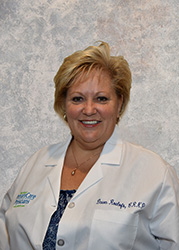By: Dawn Roelofs, CRNP
There’s no reason to stop exercising outdoors when the temperature drops. In fact, exercise in cold weather has some advantages over warmer weather:
- There’s no heat and humidity to deal with.
- You may be able to work out longer.
- Winter sunlight can improve your mood and help your body make vitamin D.
- Exercise boosts your immunity during cold and flu season.
Just follow these tips for cold-weather workouts to maintain your fitness regimen this winter.
1. Acclimate. Understand that it will take time for you to get used to working out in the cold. When you first start exercising, your body will probably need more time to warm up to perform well. Make your workouts a little lighter at first to help your body adjust.
2. Hydrate. You still sweat in cold weather, so stay hydrated. Drink water frequently even if you don’t feel very thirsty
3. Go for layers. Dressing in layers helps you manage the combination of cold air, body heat and sweat. For your first layer, choose a moisture-wicking fabric that pulls sweat away from your skin and keeps you dry. Next, add a layer of fleece, and on top put a thin waterproof garment. If you start to perspire, you can remove a layer. Avoid cotton garments. Once cotton becomes wet with sweat or snow, the moisture is trapped and will make you feel colder. Protect your hands with a thin pair of glove liners made of a wicking material under a pair of heavier gloves. Consider wearing thermal socks to keep your feet warm, and a hat or headband to protect your head and ears, or even a scarf to protect your face.
4. Know the risks. Being cold can lead to hypothermia and frostbite. Hypothermia means your body temperature has fallen below safe levels, and it can kill you. Symptoms include lack of coordination, mental confusion, slowed reactions, slurred speech, cold feet and hands, shivering and sleepiness.
Frostbite happens when cold freezes your skin. Frostbite is most common on exposed skin, such as your cheeks, nose and ears. Early warning signs include numbness, loss of feeling or a stinging sensation.
If you experience any symptoms of hypothermia or frostbite, get out of the cold immediately and get medical help.
Don’t forget the sunscreen as the winter sun can burn you, especially when it reflects off ice or snow.
5. Be realistic, stay safe. There’s a point when uncomfortable weather becomes unsafe. Check the weather before your workout. If the wind chill is extreme, the temperature is well below zero or there’s ice on the ground, it may be safer to work out indoors.
 Dawn Roelofs, Certified Registered Nurse Practitioner, received her Bachelor of Science in Nursing degree from the University of Maryland, Baltimore, and her Master of Science in Nursing degree from Drexel University. She cares for patients in MPCP’s Columbia office.
Dawn Roelofs, Certified Registered Nurse Practitioner, received her Bachelor of Science in Nursing degree from the University of Maryland, Baltimore, and her Master of Science in Nursing degree from Drexel University. She cares for patients in MPCP’s Columbia office.







